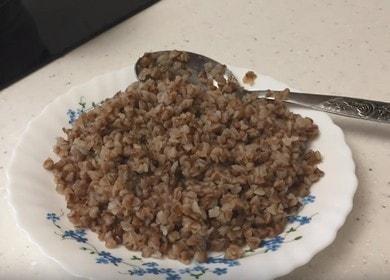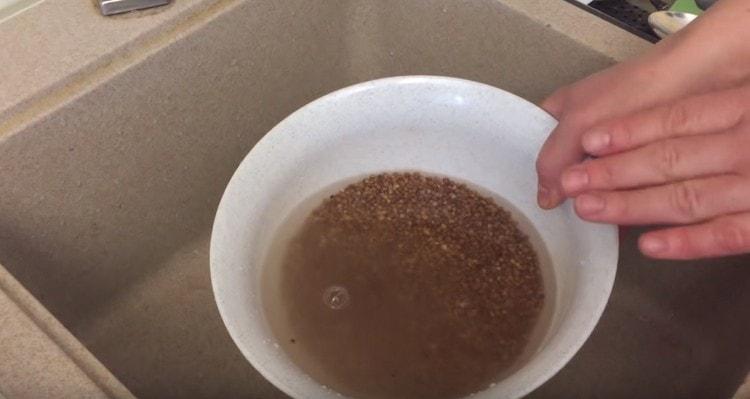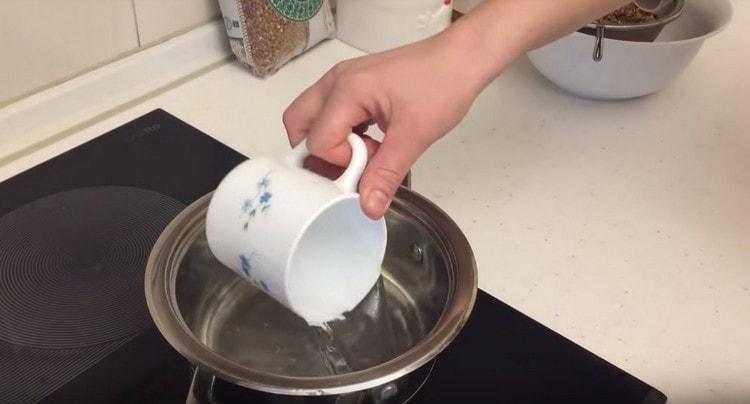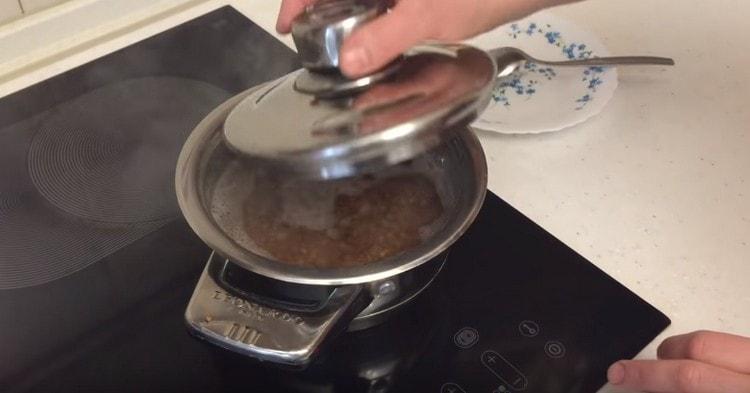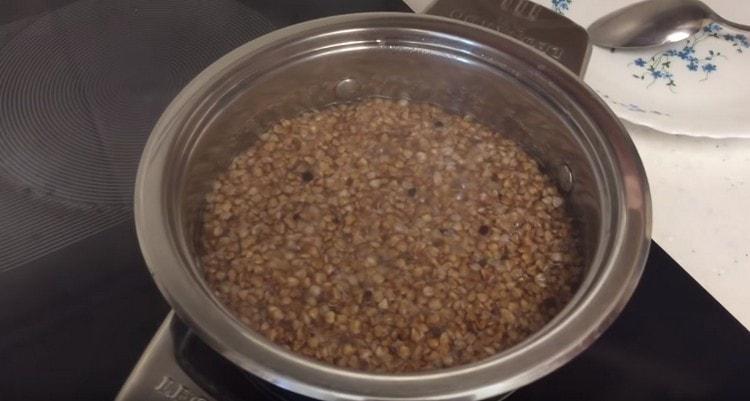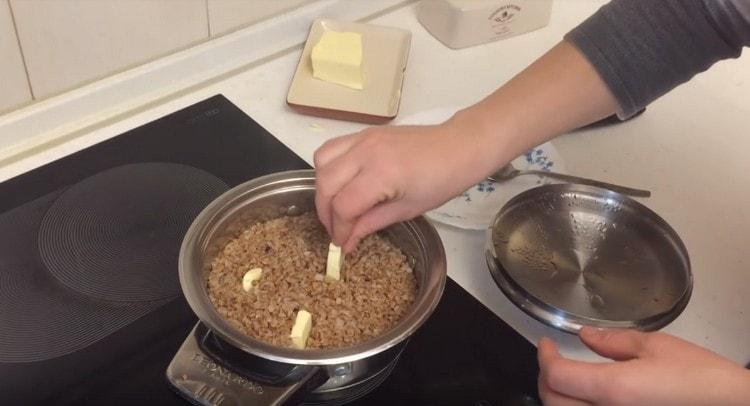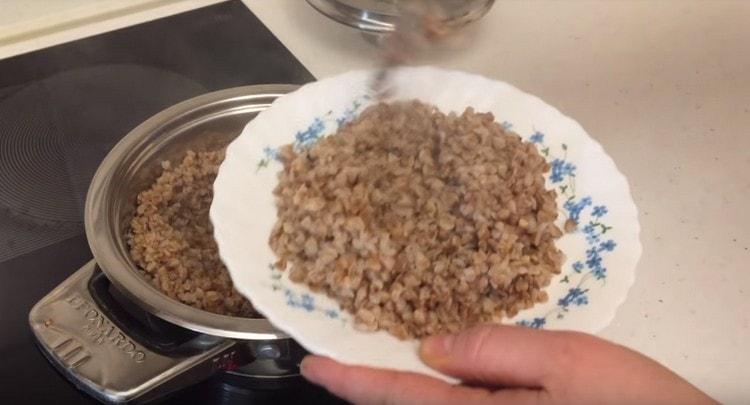Kitchen appliances and utensils: stove, ladle or pan, measuring cup, tablespoon, knife.
Ingredients
| Product | amount |
| Buckwheat | 1 stack |
| Water | 2 stack |
| Butter | 30 g |
| Salt | ½ tsp |
Step cooking
- We wash 1 cup of buckwheat several times to remove dust, possible debris and inedible elements. It is best to use buckwheat-kernel, because it retains more useful trace elements, unlike crushed or polished.

- For 1 glass of buckwheat, take 2 glasses of water. It doesn’t matter how much these glasses will be, the main thing is to keep this proportion. We put the stewpan or pan on the stove and turn on a strong fire. Pour 2 cups of water there and bring them to a boil. For cooking buckwheat, it is best to use a metal cookware, as it quickly warms up, and porridge does not burn to the walls.

- As soon as the water boils, add about ½ tsp to it. salt and washed buckwheat, mix and reduce the temperature on the stove to a minimum. We cover the bucket with a lid, but not completely: we leave a hole for the steam to exit.

- After 5 minutes, we check the level of water remaining in the bucket: it should be visible, it does not need to interfere with the porridge. If there is water, leave the buckwheat to cook under a covered lid for another couple of minutes.

- As soon as the water evaporates, turn off the stove and add 30 g of butter to the porridge. If there is no cream, add any vegetable (olive, sunflower, etc.). Cover completely and let evaporate for 10 minutes.

- After this time, open the lid, mix the porridge so that the melted butter spreads well throughout the bucket. You can lay porridge on plates and serve. You don’t need to decorate the finished porridge if your goal is just to eat and get enough carbohydrates. But optionally you can add fresh vegetables, stew or fried meat, meatballs, slices of cheese and sausage, greens and other products to your porridge to your taste.

Video recipe
You can also refer to the video recipe of the dish if you have questions about any step described in the article. The author will simply and easily explain why you need to choose just such a variety of buckwheat and how to cook it so that the porridge comes out fragrant, attractive to the eye and, most importantly, very tasty.
